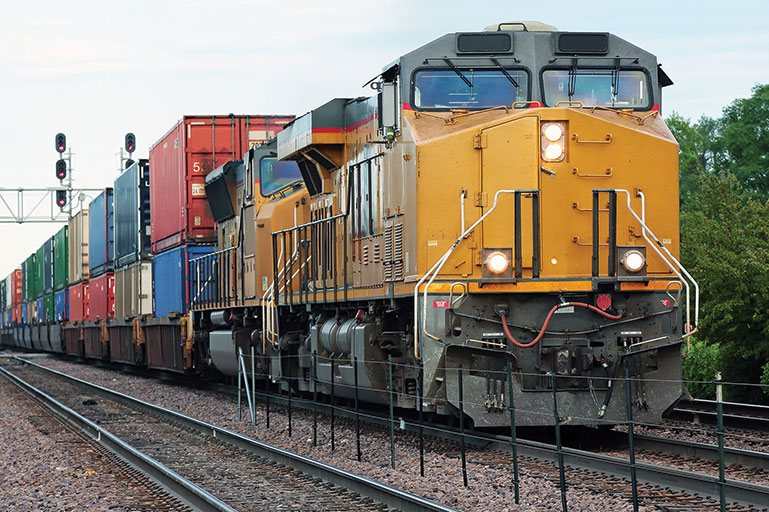International Association of Machinists and Aerospace Workers ratifies tentative rail labor deal
While more railroad unions need to come to terms on ratifying new labor agreements, another one did in recent days, with the International Association of Machinists and Aerospace Workers (IAM) coming to terms with United States Class I railroad carriers and ratified its recent tentative agreement, according to the National Carriers’ Conference Committee (NCCC), an organization representing the nation’s freight railroads in national collective bargaining.
IAM officials said that around 4,900 of its members voted to accept the agreement, adding that 59% of its membership participated in the vote, with the agreement ratified with 52% of voting members accepting the agreement.
“Our union recognizes that the agreement wasn’t accepted overwhelmingly, so our team will continue conversing with our members at our rail yards across the nation,” said IAM officials in a statement. “This agreement is the first step in addressing some of the issues in our industry. Our fight was able to shine a light on the work-life balance issues as well as the lack of proper paid sick leave. Our union will continue to amplify the deficiencies in the carriers’ sick leave and attendance policies. We want to thank IAM International President Robert Martinez Jr. for his steady leadership and counsel throughout this process. We look forward to sitting down with the carriers to find a solution to the overtime policies in our industry. The IAM is grateful for the support of President Biden, Secretary of Labor Walsh, and other allies for creating the space that allowed us to work towards a solution for our members. This agreement is essential in giving our members the respect and dignity they have earned during their careers.”
NCCC said that this agreement followed an initial unsuccessful ratification agreement by the IAM in October, adding that the ratified agreement is consistent with the framework recommended by the Presidential Emergency Board (PEB).
As previously reported, those agreements followed the announcement of the recent appointment of the Presidential Emergency Board (PEB) by President Biden, which is focused on resolving this ongoing labor dispute. The August 16 release of the PEB’s recommendations, which include a 24% wage increase over the five-year period from 2020 through 2024, coupled with a 14.1% wage increase that is effective immediately, as well as five annual $1,000 lump sum payments, with a portion of the lump sum payments are retroactive and will be paid out promptly upon ratification of the agreements by the unions’ membership, according to the National Carriers Conference Committee (NCCC), an organization representing the nation’s freight railroads in national collective bargaining.
The Wall Street Journal reported that the wages and other contract terms largely followed PEB's recommendations, adding that unions had sought raises of 31% over the five-year term of the contract, while railroads offered 17%, with wage increases amounting to around 13% in the previous five-year contract and annual wage increases in the new contract coming in between 3%-to-7%.
NCC said that, as of press time, seven railroad labor unions have now ratified agreements to resolve the national bargaining round, which are based on the PEB’s recommendations, with three other unions remaining subject to ratification.
What’s more, it added that there are still two unions that have not ratified agreements based on the PEB’s recommendations and do not have a tentative agreement pending ratification.
The two remaining unions have failed to ratify agreements based on these recommendations and do not currently have a tentative agreement pending ratification. BMWED, which is one of these unions, has the earliest strike deadline and could initiate a work stoppage as early as November 19, before members of the two largest unions—BLET and SMART-TD—would even complete voting on their tentative agreements, said NCCC.
What’s more, it added that should deals not be reached by the deadline, Congress will need to step in and act to prevent a service interruption that will harm and impact every rail-served economic sector. Examples of this highlighted in the report include: idling more than 7,000 trains per day; triggering retail product shortages and widespread manufacturing shutdowns; job losses; and disruptions to hundreds of thousands of passenger rail customers.
“As the freight sector heads into peak shipping season, a nationwide rail work stoppage would result in an unnecessary $2 billion daily economic hit,” said AAR President and CEO Ian Jefferies in a statement. “President Biden’s PEB recommended terms that would maintain the highest quality health care coverage and result in compounded wage increases of 24%, bonuses totaling $5,000 — the highest pay increases in nearly 50 years. Like those unions that have already tentatively agreed to the PEB deal, each of the remaining unions can still enter into agreements based on these recommendations. However, should negotiations fail and result in a work stoppage, Congress must act to implement the PEB recommendations—rewarding employees and stopping unnecessary economic harm and uncertainty for rail customers.”
For historical context, the AAR report cited a 1992 econometric model used by the Federal Railroad Administration, in order to estimate the impact of a national rail shutdown on both employment and economic output. The model found that a two-week shutdown would result in 570,000 rail-served industry layoffs and $14 billion in lost output—or $1 billion per day.
And it added that daily tally would be much higher now, due to inflation, the constant-dollar GDP chain-weighted deflator, which measures economy-wide price changes; and how much supply chains have been streamlined since 1992, with limited excess capacity to move goods and freight.













